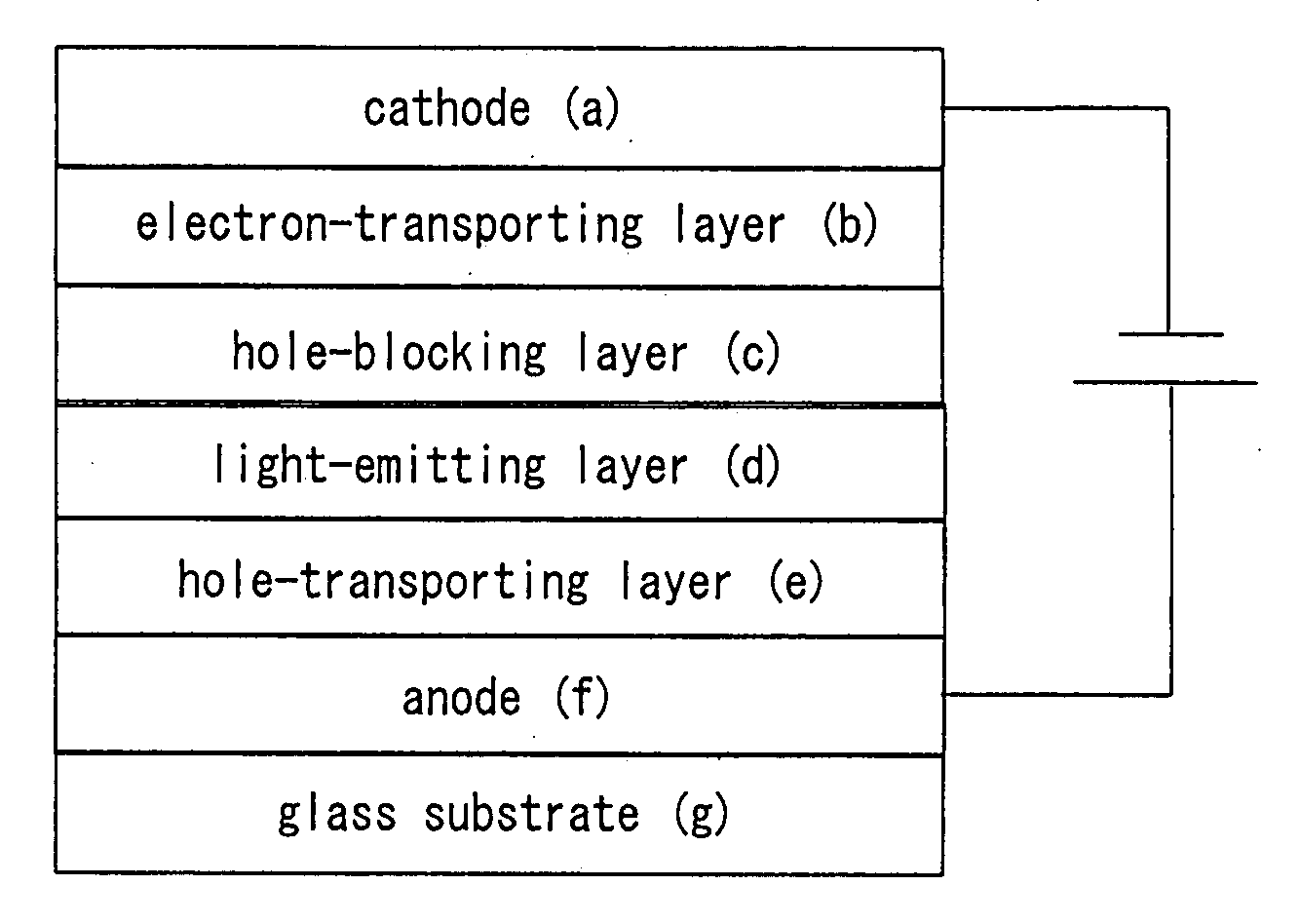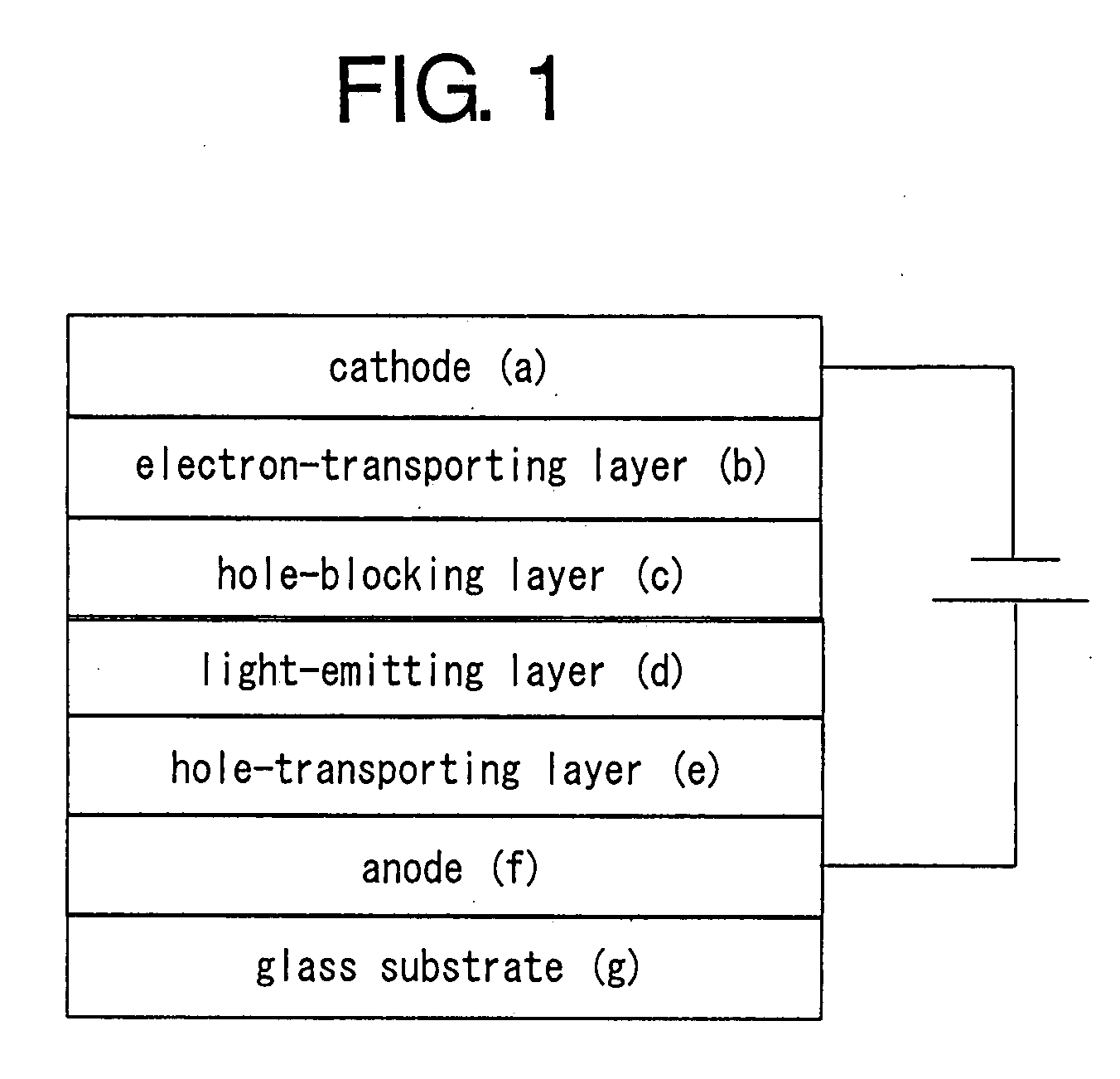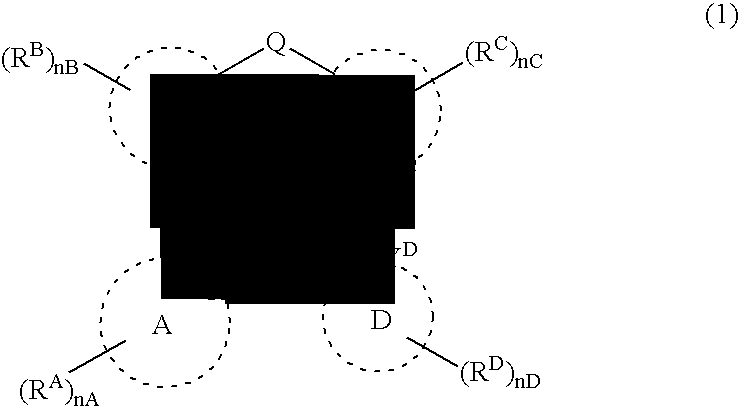Platinum complex and light-emitting device
a technology of complexes and light-emitting devices, applied in the direction of discharge tube luminescnet screens, organic chemistry, platinum organic compounds, etc., can solve the problems of difficult development of phosphorescence luminescence materials which are required to emit light having a color range from green to blue and achieve the effect of superior in the short wavelength area
- Summary
- Abstract
- Description
- Claims
- Application Information
AI Technical Summary
Benefits of technology
Problems solved by technology
Method used
Image
Examples
example 1
Preparation of 3-chloro-1-phenyl-1H-indazole
[0139]
[0140]A mixture of 3-chloro-1H-indazole (1.50 g), bromobenzene (2.16 g), sodium t-butoxide (1.1 g), n-allylpalladium chloride (36 mg), di-t-butyl-(2,2-diphenyl-1-methylcyclopropyl)phosphine (139 mg) and xylene (40 mL) was stirred under a nitrogen atmosphere at 95° C. for 3 hours. The reaction solution was allowed to cool to room temperature. Then aqueous ammonium chloride-saturated solution was added thereto and the mixture was extracted with toluene. The organic phases obtained were combined and concentrated, and the residue obtained was purified by silica gel column chromatography to give 3-chloro-1-phenyl-1H-indazole as a viscous oil (1.62 g).
[0141]1H-NMR (CDCl3) δ: 7.26-7.40 (m, 2H), 7.46-7.57 (m, 3H), 7.69-7.78 (m, 4H).
example 2
Preparation of 3-amino-1-phenylpyrazole
[0142]
[0143]A mixture of 3-aminopyrazole (1.0 g), cesium carbonate (4.32 g), cuprous oxide (86.1 mg), salicylaldoxime (330 mg), iodobenzene (2.58 g) and N,N-dimethylformamide (8 mL) was stirred under nitrogen atmosphere at 95° C. for 16 hours. The reaction solution obtained was allowed to cool to room temperature. Water and toluene were added thereto and the extraction was carried out. The organic phases obtained were combined and concentrated. The residue obtained was purified by silica gel column chromatography to give 3-amino-1-phenylpyrazole as yellowish orange oil (1.26 g).
[0144]1H-NMR (CDCl3) δ: 3.81 (br, 2H), 5.85 (d, J=1.8 Hz, 1H), 7.18 (t, J=8.4 Hz, 1H), 7.36-7.60 (m, 4H), 7.69 (d, J=1.6 Hz, 1H).
example 3
Preparation of N-(1-phenyl-1H-indazole-3-yl)aniline
[0145]
[0146]A mixture of 3-chloro-1-phenyl-1H-indazole (719 mg), aniline (139 mg), sodium t-butoxide (317 mg), π-allylpalladium chloride (11 mg), di-t-butyl-(2,2-diphenyl-1-methylcyclopropyl) phosphine (42 mg) and xylene (20 mL) was stirred under a nitrogen atmosphere at 95° C. for 3 hours. The reaction solution was allowed to cool to room temperature. Then aqueous ammonium chloride-saturated solution was added thereto and the mixture was extracted with toluene. The organic phases obtained were combined and concentrated, and the residue obtained was purified by silica gel column chromatography to give N-(1-phenyl-1H-indazole-3-yl)aniline as a viscous oil (280 mg).
[0147]1H-NMR (CDCl3) δ: 6.36 (br, 1H), 6.97 (t, J=4.8 Hz, 1H), 7.17 (t, J=4.8 Hz, 1H), 7.26-7.57 (m, 8H), 7.64 (d, J=5.4 Hz, 1H), 7.75-7.79 (m, 3H).
PUM
| Property | Measurement | Unit |
|---|---|---|
| temperature | aaaaa | aaaaa |
| temperature | aaaaa | aaaaa |
| temperature | aaaaa | aaaaa |
Abstract
Description
Claims
Application Information
 Login to View More
Login to View More - R&D
- Intellectual Property
- Life Sciences
- Materials
- Tech Scout
- Unparalleled Data Quality
- Higher Quality Content
- 60% Fewer Hallucinations
Browse by: Latest US Patents, China's latest patents, Technical Efficacy Thesaurus, Application Domain, Technology Topic, Popular Technical Reports.
© 2025 PatSnap. All rights reserved.Legal|Privacy policy|Modern Slavery Act Transparency Statement|Sitemap|About US| Contact US: help@patsnap.com



